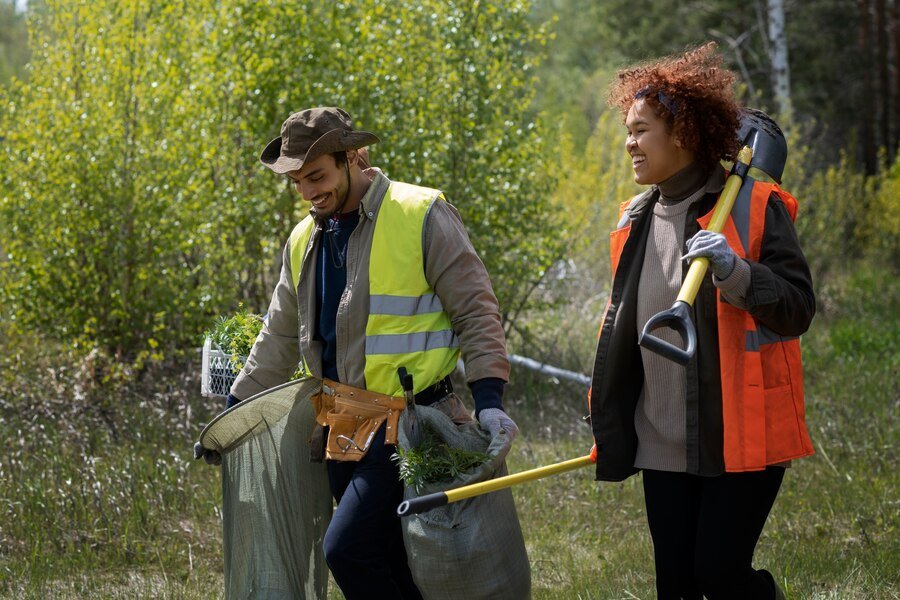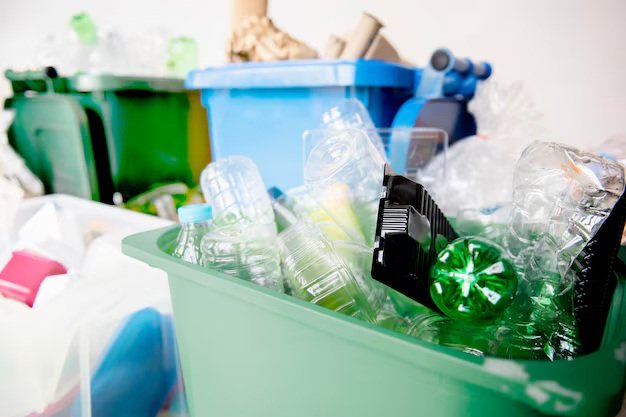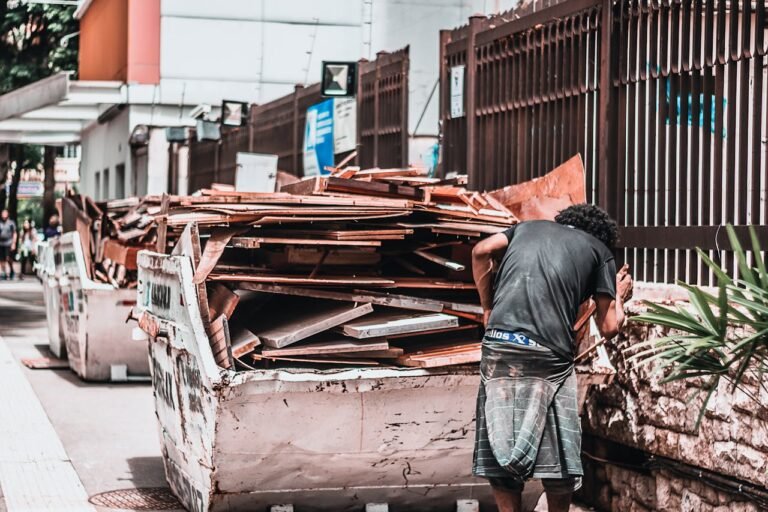Agricultural Waste Management for Environmental Sustainability: An Expert Guide
Agricultural waste management isn’t just about farming—it’s about taking care of our shared home, the Earth. Every year, farms around the world produce billions of tons of waste, from leftover crops and manure to plastic wrappers and pesticide bottles. If we don’t handle this waste wisely, it can harm our water, air, and soil—the very things we need to grow food and sustain life.
But here’s the good news: managing this waste isn’t just a chore; it’s a huge opportunity. By turning waste into compost, energy, or even reusable materials, farmers can save money, reduce pollution, and improve their land. It’s a win-win for everyone—farmers, communities, and the planet.
This guide is here to make sense of it all. You’ll find practical tips, inspiring real-life stories from farmers, and proven strategies backed by science. Whether you’re new to farming or a seasoned grower, these insights will help you turn waste into a resource. Let’s dig in and explore how we can tackle agricultural waste together, step by step, one farm at a time.

In This Article
- Understanding Agricultural Waste
- Why Effective Agricultural Waste Management Matters
- Strategies for Agricultural Waste Management
- Challenges in Agricultural Waste Management
- Actionable Tips for Farmers: Simple Steps Towards Smarter Waste Management
- Concluson
Understanding Agricultural Waste
When we think about farming, what often comes to mind are lush green fields, healthy crops, and bustling markets. But behind the scenes, farming generates a lot of waste – some of it useful and some, not so much. Managing this waste isn’t just a chore; it’s a vital part of keeping the environment safe and ensuring farms remain productive for years to come.
What is agricultural waste? Agricultural waste includes everything left over from farming activities. This can range from crop residues like straw and husks, to livestock manure, and even by-products from food processing. According to a study published in the Science of the Total Environment, farmers worldwide produce over 3.8 billion metric tons of crop residues every year. That’s enough to fill a line of trucks stretching around the Earth multiple times!
Breaking it down:
- Organic waste includes natural materials such as animal manure, leftover crop stalks, and food processing residues. These are rich in nutrients and, if managed well, can be returned to the soil to help new crops grow.
- Inorganic waste is mostly man-made items like plastic mulch, empty pesticide containers, and old irrigation pipes. These can’t break down naturally and can harm the environment if left unchecked.
- Hazardous waste includes chemical fertilisers, pesticide residues, and veterinary drugs. These require careful handling because they can pollute water and soil.
Understanding how much waste is generated—and what types—is the first step towards better management. When we find ways to reuse or recycle this waste, we’re not just solving a problem; we’re turning challenges into opportunities, protecting our environment, and helping farmers thrive.
Why Effective Agricultural Waste Management Matters
Environmental Impacts
When agricultural waste is mishandled, it doesn’t just disappear. It becomes a problem for our planet. For instance, if livestock manure isn’t treated or disposed of carefully, it can seep into water sources. This can lead to nitrate contamination, which causes algal blooms in rivers and lakes. These blooms might look harmless, but they choke oxygen out of the water, killing fish and other aquatic life, creating what scientists call “dead zones.”
It’s not just water pollution; there’s air pollution, too. According to a 2023 study in the Journal of Agriculture and Food Research, agriculture is responsible for about 10-12% of the greenhouse gases we produce globally every year. These gases, like methane from cattle and nitrous oxide from fertilisers, trap heat in the atmosphere and worsen climate change. That’s why every little step towards managing waste better can make a huge difference for the environment.
Economic Implications
Think of waste not as garbage but as an opportunity. When managed right, agricultural waste can become a valuable resource. Take manure, for example. By converting it into biogas, farms can generate their own energy. This not only cuts energy costs but can even create extra income if the energy is sold.
Crop residues, like straw and husks, are another hidden treasure. Instead of burning them, which harms the air, they can be turned into compost. Composting improves soil health and reduces the need for expensive chemical fertilisers. In simple terms, good waste management saves money and even helps make money.
Social and Health Benefits
Improperly handled agricultural waste doesn’t just harm nature—it affects people. Contaminated water can spread diseases like diarrhoea, which especially hits vulnerable rural communities. But when waste is managed well, these risks are drastically reduced. Clean water and air mean healthier families.
Beyond health, proper waste practices create jobs. Recycling programs, composting businesses, and biogas plants all need workers, supporting local economies and helping rural communities thrive. Effective waste management isn’t just about fixing problems; it’s about building a better, healthier future for everyone.
In short, managing agricultural waste properly isn’t just about keeping farms clean. It’s about protecting our planet, saving money, and creating a healthier and more sustainable world for all of us.
Learn More: How Does Industrial Agriculture Promote Farming Techniques that are Ecologically Destructive?
Strategies for Agricultural Waste Management
These strategies focus on keeping things simple, sustainable, and impactful.
1. Composting
What It Is: At its heart, composting is nature’s way of recycling. It’s the process where organic waste – like crop leftovers, food scraps, and manure – breaks down into a rich, earthy substance called humus. This humus is packed with nutrients that plants love, making it an excellent fertiliser.
How to Compost:
- Step 1: Gather your organic materials. Think crop residues, dry leaves, kitchen scraps, and manure.
- Step 2: Mix it right! For composting to work its magic, you need a balance of “browns” (carbon-rich materials like straw or dry leaves) and “greens” (nitrogen-rich materials like fresh grass clippings or manure).
- Step 3: Keep it moist. Compost needs water, but not too much. Think of the consistency of a wrung-out sponge.
- Step 4: Aerate. Turn your compost pile regularly to let air in. This prevents bad smells and helps everything break down evenly.
Real-World Example: Sarah, a farmer, started composting on her 500-acre farm a few years ago. “I used to spend a lot on chemical fertilisers,” she says, “but now, with compost, I’ve cut those expenses by 40% and my soil is healthier than ever.” What’s more, studies show that composting reduces methane emissions that would otherwise be released if organic waste ended up in a landfill. So, Sarah’s not just saving money; she’s helping the planet too.
2. Anaerobic Digestion
What It Is: Imagine putting all your organic waste into a sealed container, removing the oxygen, and letting bacteria do their thing. That’s anaerobic digestion. The result? Biogas and digestate. Biogas is a renewable energy source, and digestate is a fantastic organic fertiliser.
Benefits:
- Biogas: This can be used to power farm equipment, heat greenhouses, or even be sold as electricity.
- Digestate: Rich in nutrients, it can go straight back onto the fields, improving soil fertility.
Research Insight: A 2020 study in Renewable Energy revealed that biogas production from dairy farm manure reduced methane emissions by 60%. That’s a significant step in combating climate change while generating energy.
How It’s Done: Anaerobic digestion requires specialised equipment, but it’s becoming more accessible. Farmers can collaborate or form cooperatives to share resources and set up digesters.
3. Recycling and Reusing Inorganic Waste
Organic waste isn’t the only problem on farms. Plastic mulch, irrigation pipes, and pesticide containers also pile up. These materials can’t just be left in fields or burned; they need responsible recycling.
Plastic Management Tips:
- Wash and store used plastics like mulch sheets and irrigation pipes.
- Partner with local recycling programs or cooperatives to ensure these materials are processed properly.
Case Study: In Maharashtra, India, farmers’ cooperatives have taken the lead in collecting used plastic mulch. They send it to recycling plants, where it’s turned into new products. This initiative has not only reduced plastic pollution in the area but also created a side income for participating farmers. It’s a win-win: cleaner fields and fuller pockets.
Expert Opinion: Dr. Lisa Harper, an environmental scientist, stresses, “Inorganic waste might seem like a smaller issue compared to organic waste, but its long-term environmental impact is huge. Recycling technologies tailored for rural communities can drive significant change.”
4. Integrating Waste-to-Energy Systems
What It Is: Turning waste into energy sounds futuristic, but it’s happening today. Technologies like combustion, gasification, and pyrolysis can transform agricultural residues into energy and other useful by-products.
Technology Spotlight:
- Pyrolysis Units: These small-scale machines can process crop residues and turn them into biochar, bio-oil, and syngas. Biochar is a star product; it not only stores carbon but also boosts soil fertility.
Energy Potential: Let’s break down the energy that different types of waste can generate:
| Waste Type | Energy Potential (MJ/kg) |
|---|---|
| Corn Stalks | 15-17 |
| Rice Husk | 12-14 |
| Animal Manure | 5-8 |
Why It Matters: Using waste-to-energy systems helps reduce dependence on fossil fuels, lowers greenhouse gas emissions, and creates sustainable energy sources. It’s an investment in the future of farming.
Challenges in Agricultural Waste Management
1. Lack of Awareness
Many farmers simply don’t know how to manage their waste sustainably. It’s not their fault—information and training often don’t reach rural communities. For example, in some parts of the world, burning leftover crops after harvest is still common. While it might seem like an easy solution, it creates thick smoke that pollutes the air and harms people’s health.
Take Ravi, a farmer in Punjab, India. He used to burn his crop residues every season. “It’s what everyone did,” Ravi says. But the smoke made breathing difficult for his family and neighbours. Then, a local NGO stepped in. They showed Ravi how to use a baler to collect the residues and turn them into compost. “It’s transformed the way I farm,” Ravi says with a smile. Now, he has healthier soil and cleaner air around his farm.
2. Limited Infrastructure
Even when farmers want to manage waste properly, the lack of infrastructure can hold them back. Recycling facilities or systems to convert waste into energy are often missing in rural areas. Setting up these facilities isn’t cheap, and without government or community support, it’s almost impossible for individual farmers to afford them.
3. Policy and Regulation Gaps
Policies play a big role in how waste is managed, but in many places, the rules are unclear or don’t support farmers effectively. For instance, there might not be enough incentives for farmers to switch to eco-friendly practices. Governments need to step up with clear guidelines and financial support to make sustainable waste management accessible for everyone.
Learn More: How to Dispose of Waste Properly: A Guide to Proper Waste Management
Actionable Tips for Farmers: Simple Steps Towards Smarter Waste Management
By taking small, intentional steps, you can make a big difference for your farm and the environment. Here are five actionable tips to help you get started:
Start Small
You don’t have to tackle everything at once. Begin with something simple, like composting your crop residues. Gather leftover plant material, mix it with manure or other organic matter, and let nature do its work. Over time, you’ll have rich compost to boost your soil’s health while reducing the need for chemical fertilisers. Farmers like Maria in the Philippines swear by this. “I started with just a corner of my field, and now I’m saving money and seeing healthier crops,” she says.
Leverage Technology
Technology can make waste management easier. Apps like AgriSync or FarmLogs help track waste generation, monitor field activities and even suggest ways to repurpose materials. For instance, using sensors to measure nutrient levels in manure can ensure you’re applying the right amount to your fields, saving resources and preventing runoff.
Collaborate
You don’t have to do it alone. Join a local cooperative or network of farmers. Sharing equipment like balers or compost turners can save costs and effort. In many regions, groups have banded together to pool waste and sell it to energy plants or compost producers. Collaboration also builds community and spreads valuable knowledge.
Seek Assistance
Don’t hesitate to ask for help. Local agricultural extension services, universities, or NGOs often provide free training on waste management. They can help you access grants, learn new techniques, and connect with experts.
Advocate
Finally, your voice matters. Join discussions with policymakers about improving waste management infrastructure in your area. Advocate for subsidies on recycling equipment or better guidelines for managing farm waste. Farmers’ input is essential for creating practical, effective policies.
By starting small, using the right tools, and working together, managing agricultural waste becomes less daunting and more rewarding. Every step you take not only helps your farm thrive but also contributes to a healthier planet.
Concluson
Sustainable agricultural waste management is a shared responsibility. By adopting innovative practices, leveraging technology, and fostering collaboration, we can turn agricultural waste from an environmental challenge into an opportunity for growth and sustainability.
“Waste is only waste if we waste its potential.” – Anonymous
This guide is a call to action for farmers, policymakers, and communities to rethink agricultural waste management—not just for today but for the generations to come.







